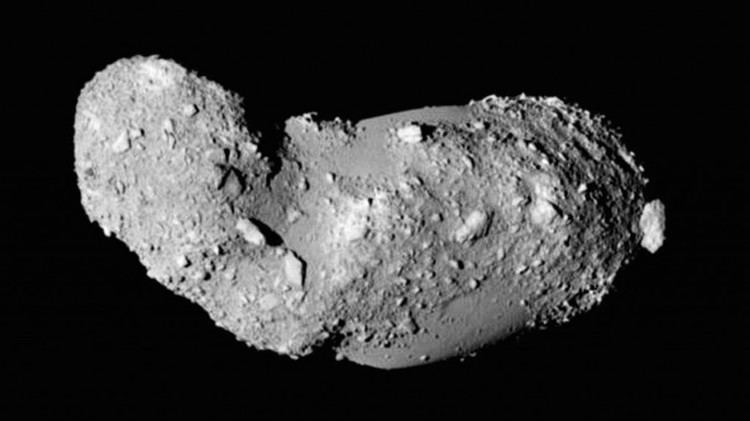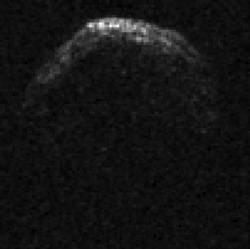Alternative names 2000 YK66 Observation arc 24122 days (66.04 yr) Discovered 22 February 1950 Orbits Sun | Discovery date 22 February 1950 Aphelion 2.5614 AU (383.18 Gm) Inclination 12.182° Discoverer Carl A. Wirtanen | |
Similar Sun, Solar System, 99942 Apophis, (410777) 2009 FD, 101955 Bennu | ||
(29075) 1950 DA is a near-Earth asteroid. Among asteroids more than 1 km in diameter, it is notable for having the highest known probability of impacting Earth. In 2002, it had the highest Palermo rating with a value of 0.17 for a possible collision in 2880. Since that time, the estimated risk has been updated several times. In December 2015, the odds of an Earth impact were revised to 1 in 8,330 (0.012%) with a Palermo rating of −1.42. (29075) 1950 DA is not assigned a Torino scale rating, because the 2880 date is over 100 years in the future.
Contents

Discovery and name

(29075) 1950 DA was first discovered on February 23, 1950, by Carl A. Wirtanen at Lick Observatory. It was observed for seventeen days and then lost because the short observation arc resulted in large uncertainties in Wirtanen's orbital solution. On December 31, 2000, it was recovered as 2000 YK66 and just two hours later was recognized as (29075) 1950 DA.
Observations
On March 5, 2001, (29075) 1950 DA made a close approach to Earth at a distance of 0.0520726 AU (7,789,950 km; 4,840,450 mi). It was studied by radar at the Goldstone and Arecibo observatories from March 3 to 7, 2001.
The studies showed that the asteroid has a mean diameter of 1.1 km, assuming that (29075) 1950 DA is a retrograde rotator. Optical lightcurve analysis by Lenka Sarounova and Petr Pravec shows that its rotation period is 2.1216 ± 0.0001 hours. Due to its short rotation period and high radar albedo, (29075) 1950 DA is thought to be fairly dense (more than 3.5 g/cm³) and likely composed of nickel–iron. In August 2014, scientists from the University of Tennessee determined that (29075) 1950 DA is a rubble pile that is kept together by van der Waals forces.
Possible Earth impact
That (29075) 1950 DA has one of the best-determined asteroid orbital solutions is due to a combination of:
Main-belt asteroid 78 Diana (~125 km in diameter) will pass about 0.003 AU (450,000 km; 280,000 mi) from (29075) 1950 DA on August 5, 2150. At that distance and size, Diana will perturb (29075) 1950 DA enough so that the change in trajectory is notable by 2880 (730 years later). In addition, over the intervening time, (29075) 1950 DA's rotation will cause its orbit to slightly change as a result of the Yarkovsky effect. If (29075) 1950 DA continues on its present orbit, it may approach Earth on March 16, 2880, though the mean trajectory passes many millions of kilometres from Earth, so (29075) 1950 DA does not have a significant chance of impacting Earth. As of the 7 December 2015 solution, the probability of an impact in 2880 is 1 in 8,330 (0.012%).
The energy released by a collision with an object the size of (29075) 1950 DA would cause major effects on the climate and biosphere, which would be devastating to human civilization. The discovery of the potential impact heightened interest in asteroid deflection strategies.
